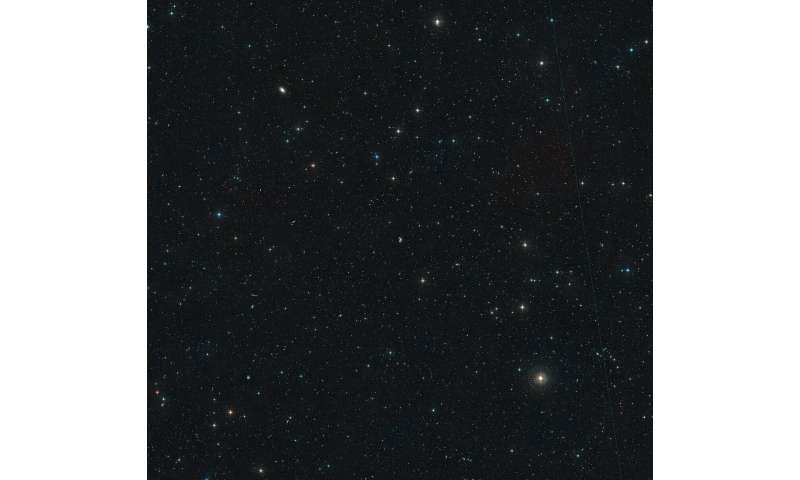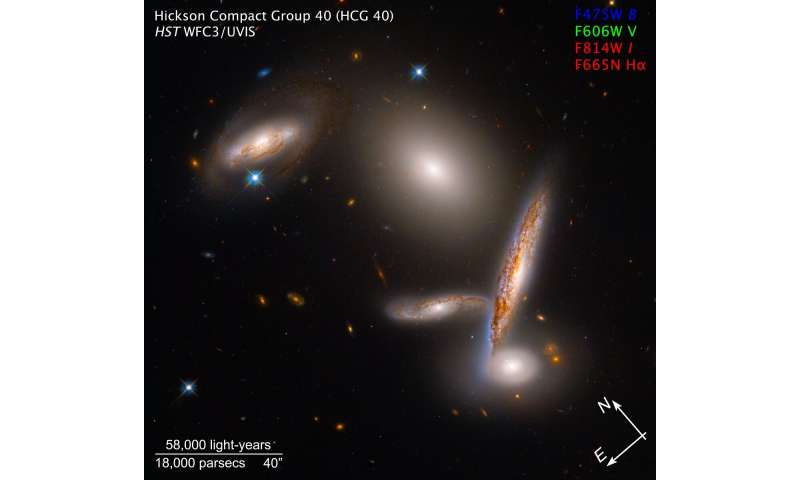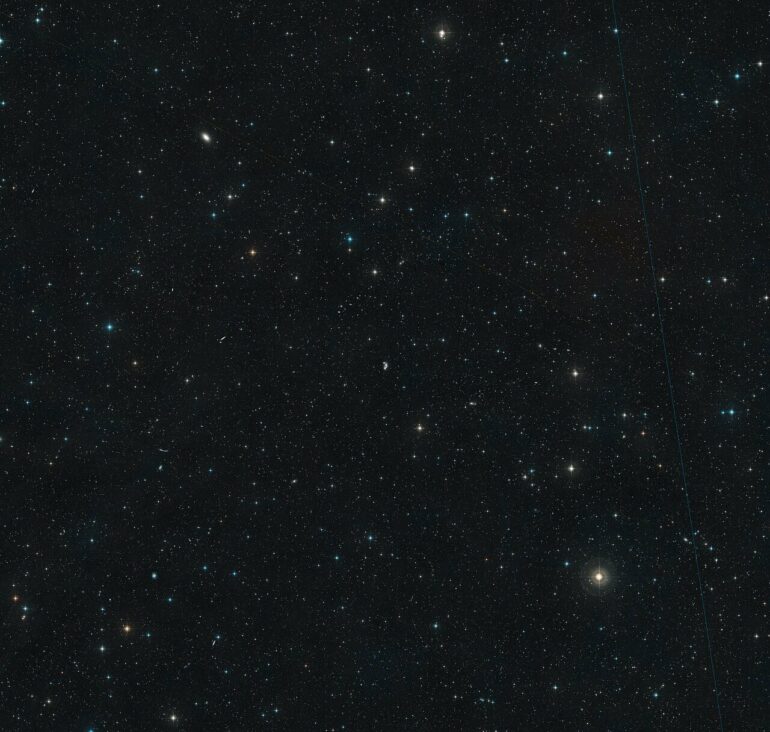The NASA/ESA Hubble Space Telescope is celebrating its 32nd birthday with a stunning look at an unusual close-knit collection of five galaxies, called the Hickson Compact Group 40. This snapshot reflects a special moment in their lifetimes as they fall together before they merge.
This menagerie includes three spiral-shaped galaxies, an elliptical galaxy and a lenticular (lens-like) galaxy. Somehow, these different galaxies have crossed paths to create an exceptionally crowded and eclectic galaxy sampler.
Caught in a leisurely gravitational dance, the whole group is so crowded that it could fit within a region of space that is less than twice the diameter of our Milky Way’s stellar disk.
Though such galaxy groupings can be found in the heart of huge galaxy clusters, these galaxies are notably isolated in their own small patch of the Universe, in the direction of the constellation Hydra.
One possibility is that there’s a lot of dark matter (a poorly understood and invisible form of matter) associated with these galaxies. If they come close together the dark matter can form a big cloud within which the galaxies orbit. As the galaxies plow through the dark matter they feel a frictional force that results from its gravitational effects. This slows their motion and makes the galaxies lose energy, so they fall together. Therefore, this snapshot catches the galaxies at a very special moment in their lifetimes. In about 1 billion years they will eventually collide and merge to form a single giant elliptical galaxy.

The NASA/ESA Hubble Space Telescope is celebrating its 32nd birthday with a stunning look at an unusual close-knit collection of five galaxies, called the Hickson Compact Group 40. This snapshot reflects a special moment in their lifetimes as they fall together before they merge. © NASA, ESA and STScI

The NASA/ESA Hubble Space Telescope is celebrating its 32nd birthday with a stunning look at an unusual close-knit collection of five galaxies, called the Hickson Compact Group 40. This snapshot reflects a special moment in their lifetimes as they fall together before they merge. © NASA, ESA and STScI
Astronomers have studied this compact galaxy group not only in visible light, but in radio, infrared, and at X-ray wavelengths. Almost every one of the galaxies has a compact radio source at its core, which could be evidence for the presence of a supermassive black hole. X-ray observations show that the galaxies have been gravitationally interacting as witnessed by the presence of a lot of hot gas amongst them. Infrared observations reveal clues to the rate of formation of new stars.
Though over 100 such compact galaxy groups have been cataloged in sky surveys going back several decades, Hickson Compact Group 40 is one of the most densely packed. Observations suggest that such tight groups may have been more abundant in the early Universe and provided fuel for powering black holes, known as quasars, whose light from superheated inflating material blazed across space. Studying the details of galaxies in nearby groups like this helps astronomers sort out when and where galaxies assembled themselves, and what they are assembled from.
Provided by
European Space Agency
Citation:
Celebrating Hubble’s 32nd birthday with a galaxy grouping (2022, April 19)



